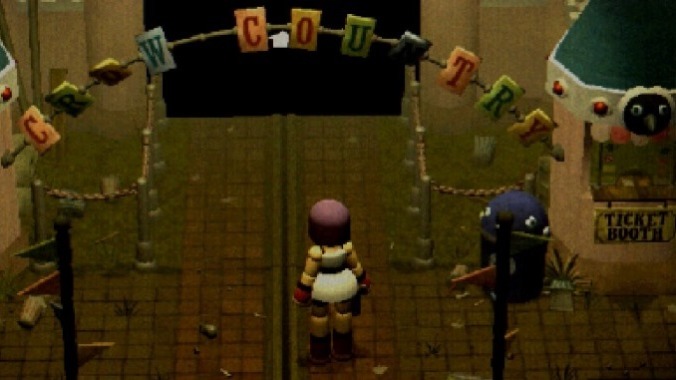Crow Country and the Horror of Theme Parks
Monster Mansion photo by Garrett Martin
In 1989 11-year-old William Pope died on the roller coaster Z-Force at Six Flags over Georgia, a theme park just outside Atlanta. Although an autopsy was inconclusive, medical experts believed the ride contributed to Pope’s death. The incident didn’t force Six Flags to immediately close Z-Force, but it didn’t last too much longer, closing a couple of seasons later in 1991. At that point it was moved to a different Six Flags park and reopened under a new name. Pope’s death was a senseless tragedy that stayed in the news for a short while and then was largely forgotten about outside of the boy’s family and Atlanta locals who remembered the coverage. It probably would’ve remained that way if it wasn’t for the internet and Wikipedia lists and YouTube videos about theme park deaths.
I don’t know if the designers of the videogame Crow Country know about Pope’s death specifically. I wouldn’t be surprised if they do, as the survival horror game’s backstory is about a child who is severely injured at a theme park outside Atlanta in the ‘80s. Of course, the internet is full of sad stories of tragic accidents at what are supposed to be fun parks; any one of them, or even just the basic concept itself, could be the main inspiration for Crow Country. As an Atlanta local who grew up going to Six Flags over Georgia, though, and who watched the news coverage in real time when Pope died, and who actually rode Z-Force before it was removed, I made the connection instantly. It’s only one way that Atlanta’s real theme park history is as dark and tragic as the game’s.
Crow Country is set in 1990, but it looks straight out of the late ‘90s—primarily the era of the original PlayStation. It’s another 21st century survival horror game that uses the archaic aesthetic of the genre’s first major wave to ratchet up its tension and horror. Its dread comes not just from its cryptic story, its twisted monsters, or its difficulty, but from the creepiness of its outdated, slightly off graphics; it’s the videogame equivalent of a horror movie using the anachronistic fuzziness of a VHS tape to unsettle a modern viewer.
The mystery at the heart of Crow Country is threefold: why was the park opened, why did it shut down suddenly, and what caused the accident that sent a young guest to the hospital while it was still open. I wouldn’t call the answers all that fulfilling, but it’s not always about the destination. Crow Country’s point-and-click inspired puzzle solving is engrossing and rewarding enough to make up for its narrative looseness, and its sharp writing and character building pick up the plot’s slack.
It also captures both the imaginative power of themed attractions and the inherent chintziness of small, local, low budget parks. Crow Country, the park, is separated into a handful of areas with distinct themes; a kid-friendly fairytale area adapts folk tales and nursery rhymes, while an underwater-themed land has a submarine exhibit and a mermaid-themed boat ride (sadly it’s on the fritz). You can tell that the park didn’t take it easy, and tried to do a lot despite its small budget; you can also tell it would never compete with the Disney or Universals of the world, with most of its attractions being themed walkthroughs instead of actual rides. It doesn’t use animatronics so much as mannequins with soundtracks. Still, its horror and undersea lands skirt around the park’s limitations with a few clever ideas and design elements, and if Crow Country had actually existed near Atlanta in the late ‘80s I’m pretty sure I would’ve been charmed by it as a kid.
